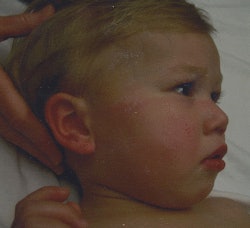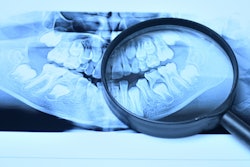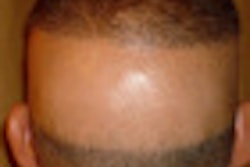
The family of a 2-year-old boy who received a massive overdose of radiation during a series of CT scans in 2008 has reached a settlement with the Northern California hospital where the incident occurred.
The settlement was filed on Friday, May 21, at Humboldt County Superior Court between the Mad River Community Hospital in Arcata, CA, and the family of Jacoby Roth. Details of the settlement are confidential.
"His parents are relieved to have the litigation over after two years, and it's nice to have some resolution, but of course they're still worried about the long-term effects of the radiation on his health," said family attorney Don Stockett. "They hope that others have been spared excessive radiation exposures because of the publicity focused on this and other overdose cases, like Cedars-Sinai Medical Center in Los Angeles."
The case is one of several well-publicized incidents of radiation overdose that have prompted federal lawmakers and regulatory authorities to examine the regulation of medical radiation more closely.
Emergency CT scans
In January 2008, the boy was taken to the emergency room at the hospital, located in a small town 290 miles north of San Francisco, after he fell out of bed and had difficulty moving his head.
The ER doctor ordered x-rays and CT scans to check for damage to the boy's cervical spine. The child was taken to the scanning room, where radiologic technologist Raven Knickerbocker performed CT scans at C-spine levels C1 through C4 in the same section of the midmaxillary sinuses, midclivus, and posterior fossa. Over the next 68 minutes, the toddler was exposed to 151 scans.
 |
| Jacoby Roth several hours after receiving 151 CT scans in a 68-minute period. Image courtesy of Roth family attorney Don Stockett. |
Knickerbocker was fired by the hospital and her license was suspended following hearings by the California Department of Public Health (CDPH). She is appealing the suspension.
In off-the-record comments during the hearings, one state official called it the worst case of radiation overdose of a child in the U.S.
Knickerbocker said she only pressed the CT system's scan button "two to four times," according to Stockett, who questioned her during a December deposition in preparation for a civil trial in a lawsuit filed by the boy's parents. The suit claimed negligence and medical battery by Knickerbocker and the hospital.
Knickerbocker testified during the deposition that she performed two scout scans and then tried to start the examination, but the machine did one rotation before it stopped and displayed a fault code, said Stockett, whose practice is based in Folsom, CA. She asserted the scanning procedure lasted only about 20 minutes.
The boy's blood sample was sent for analysis to Dr. David Lloyd, a DNA specialist and principal investigator of the Molecular Design Group of the School of Biochemistry and Immunology at Trinity College in Dublin, Ireland. Lloyd's analysis of the child's lymphocytes found he sustained substantial chromosomal damage, Stockett said.
Dr. Fred Mettler, a radiation injury specialist at the radiology department of the University of New Mexico in Albuquerque, estimates the boy received the following radiation doses: 5.3 Gy to the brain and salivary glands, 7.3 Gy to the skin, and 1.54 Gy to the lenses of both eyes, according to Stockett. The child will probably develop cataracts within three to eight years, Mettler concluded.
Though excessive radiation exposure can lead to an increased risk of cancer, Stockett noted there is not a lot of information on the effects of radiation administered to a small area of the body. Survivors of the Hiroshima atomic bomb or the Chernobyl nuclear accident received full-body exposure, Stockett said. So it's difficult to extrapolate the CT scan -- which Stockett said caused overexposure to a 3-cm strip on Jacoby Roth's head -- to the studies done on other radiation overdose survivors.
It's also difficult to trace a condition that might develop in the future back to an overexposure to radiation, Stockett said. "The law has not evolved to understand radiation injury," he noted.
He said the most likely medical effect on the boy will be the formation of cataracts, but the other body parts that were exposed -- the salivary glands, brain, and eyes -- could also be affected in the future.
The CDPH issued a $25,000 fine against the hospital, but it was dismissed on appeal. Representatives for Mad River did not comment on the Roth settlement as of press time.
The Roth case is one of a number of radiation overdose cases, including one at Cedars-Sinai Medical Center in Los Angeles, that have led to increased oversight of medial radiation.
By Donna Domino
AuntMinnie.com contributing writer
May 24, 2010
Related Reading
California RT gives deposition in CT overdose case, December 10, 2009
California technologist faces testimony in CT overdose case, September 18, 2009
California hospital fined $25,000 for pediatric CT radiation overdose, March 24, 2009
Parents sue California hospital over CT radiation dose, November 20, 2008
Copyright © 2010 AuntMinnie.com




















